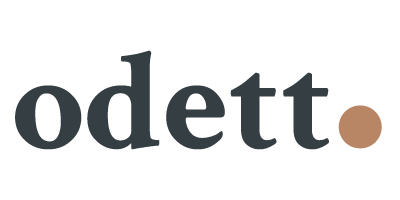In UX (User Experience) research, it’s a common pitfall to directly ask participants what features they want or believe are missing in a product. I still see this being discussed over and over again, on LinkedIn, in teams I work in, and this issue keeps popping up. While this might seem like a straightforward approach to understanding user needs, it often leads to misguided solutions. Here are several key reasons why it’s generally advised against during user interviews:
1. Surface desires vs. underlying needs
Participants often suggest features based on their immediate thoughts and perceptions without a deeper consideration of their actual needs. For instance, they might request features that seem desirable in theory but wouldn’t actually use in practice.
Understanding the difference between surface desires and underlying needs is crucial because it allows researchers to develop solutions that truly address the core issues users face. By focusing on underlying needs, researchers can create more effective and sustainable solutions that improve the overall user experience.
By asking the user about their experiences and behaviors, researchers can identify their underlying needs more accurately. This approach ensures that the solutions developed are rooted in genuine user requirements rather than superficial desires.
- Example 1: Users asked what features they want in a new productivity app might suggest more customization options. However, deeper investigation might reveal they need a more intuitive way to organize tasks.
- Example 2: Users may also suggest adding more notifications to stay updated, but underlying research might show that fewer, more relevant notifications would enhance their productivity by reducing distractions.
2. Limited perspective
Users typically have a limited view of what is technologically feasible or might be constrained by their current understanding of the product. This limits their ability to propose truly innovative or useful features. They might focus on improvements to current frustrations rather than envisioning new possibilities that could be more beneficial.
Recognising users’ limited perspective is essential for promotinh innovation. By understanding the constraints of user knowledge, researchers can push the boundaries of what’s possible and come up with solutions that users might not have even considered. By steering the conversation towards their experiences and pain points, researchers can gather insights that lead to more innovative solutions.
- Example 1: A user might suggest adding a search function to a mobile app due to difficulty locating information. A more innovative solution could be an AI-driven assistant that proactively suggests relevant content based on user behaviour.
- Example 2: A user could suggest improving the loading speed of an app. However, understanding their frustration might lead to a solution where the app preloads essential content based on usage patterns, thus enhancing the overall user experience.
3. Solution bias
When you ask users what features they want, the discussion shifts towards solutions rather than problems. This can lead to a bias towards certain types of solutions, potentially overlooking simpler or more effective alternatives. UX research aims to unearth problems first, then iterate potential solutions based on these insights.
Avoiding solution bias is crucial for developing effective and efficient solutions. By focusing on problems rather than solutions, researchers can identify the root cause of user issues and develop a wider range of potential solutions, leading to more innovative and effective outcomes. By focusing on the problems, researchers can explore a broader range of solutions that might be more effective.
- Example 1: Users might suggest more detailed maps for a navigation app to help them navigate better. However, focusing on the problem—difficulty in finding the best route—might lead to a simpler solution like enhanced route suggestions based on real-time traffic data.
- Example 2: Users might recommend more detailed analytics in a fitness app. However, addressing the problem of users feeling overwhelmed by data could lead to a solution that offers more personalised and simplified insights.
4. Innovation constraints
Directly asking for feature requests can restrict the creativity and expertise of the design and development team. It might lead to incremental updates rather than breakthrough innovations, as the suggestions are often based on existing paradigms and user experiences.
Understanding innovation constraints is vital for pushing the boundaries of what’s possible. By not limiting themselves to user-suggested features, design teams can leverage their expertise to create groundbreaking solutions that significantly enhance user experience. By understanding the core issues, design teams can leverage their expertise to create innovative solutions that users might not have envisioned.
- Example 1: Users might suggest adding more filters to a photo-editing app. The design team, understanding the core issue of users wanting to enhance photos quickly, might develop a new feature that automatically suggests the best edits based on the photo’s content.
- Example 2: Users might ask for more themes in a messaging app, but the design team could innovate by creating a dynamic theme that changes based on the time of day or user activity, providing a more engaging experience.
5. Confirmation bias
There’s a risk of confirmation bias where researchers or designers might only hear and prioritize information that supports their preconceptions or the status quo of the product. This bias can stifle innovation and lead to solutions that don’t fully address user needs.
Mitigating confirmation bias is essential for fostering innovation and ensuring that solutions fully address user needs. By focusing on understanding user experiences and uncovering problems, researchers can develop more comprehensive and effective solutions. By focusing on uncovering problems and understanding user experiences, researchers can mitigate this bias and develop more effective solutions.
- Example: A team might have a preconceived notion that users prefer a certain layout for an app. If they ask for feedback on this layout, they might only hear positive comments that confirm their belief. Asking about users’ overall experience and pain points might reveal that a different layout would be more effective.
- Example 2: A team might believe that users favour a specific feature based on previous feedback. However, by exploring broader user experiences, they might discover that users are actually looking for a streamlined, more integrated feature set.
Conclusion
In conclusion, while user feedback is invaluable, the key to effective UX research lies in understanding user experiences and identifying underlying needs rather than directly asking for feature requests. This approach ensures that the solutions developed are truly user-centric and innovative. By focusing on uncovering problems and understanding user experiences, researchers can develop solutions that not only meet user needs but also push the boundaries of what’s possible.
The next time you’re conducting a user interview, remember to dig deeper into the user’s experiences and behaviours. This will help you uncover the underlying needs that can lead to more innovative and effective solutions, ultimately creating a product that truly resonates with your users.




